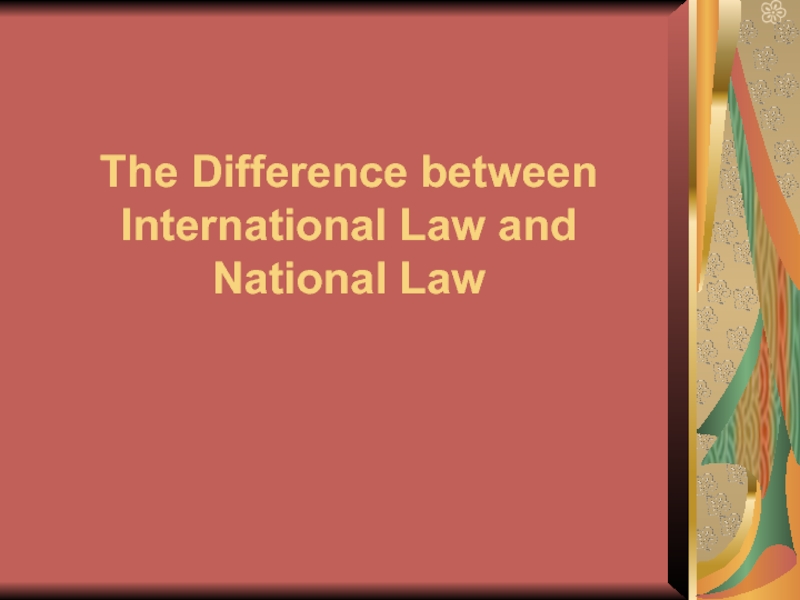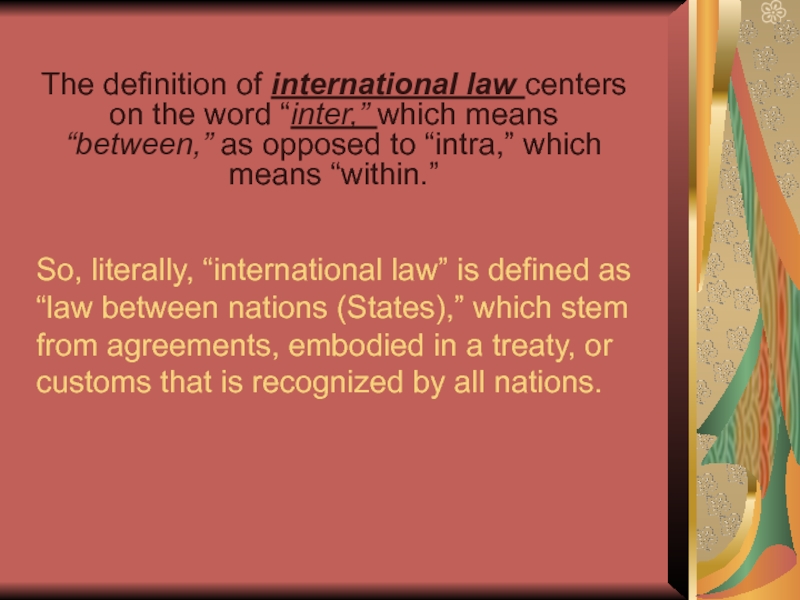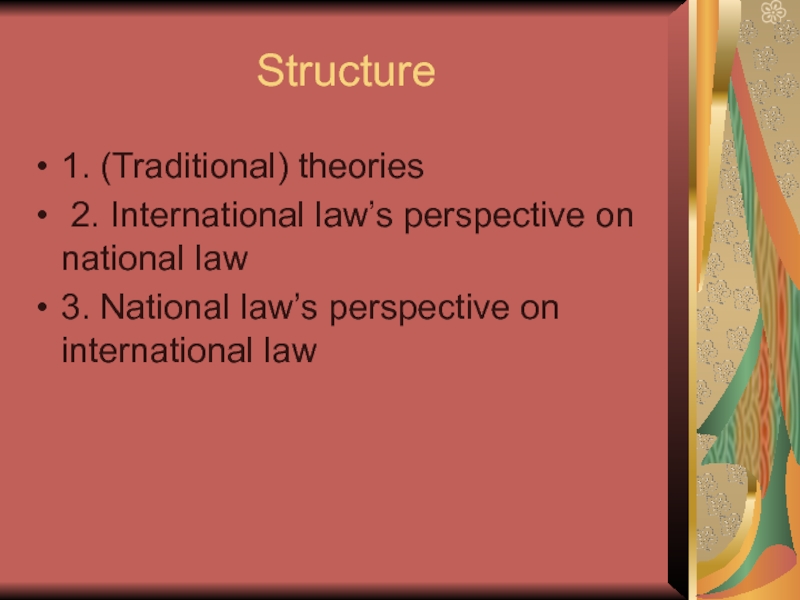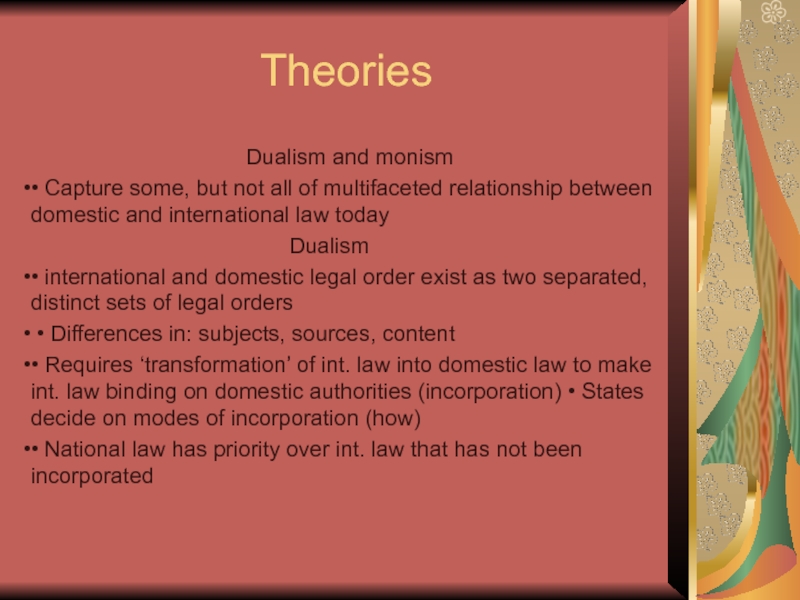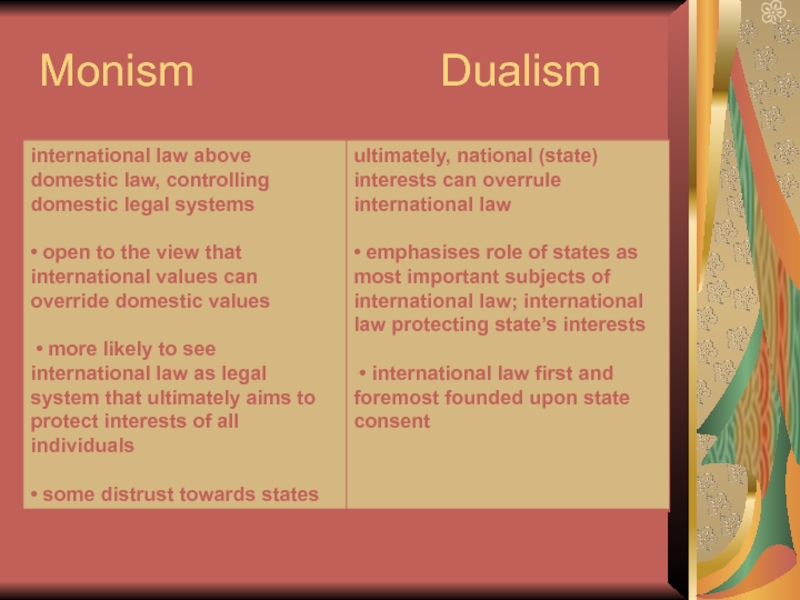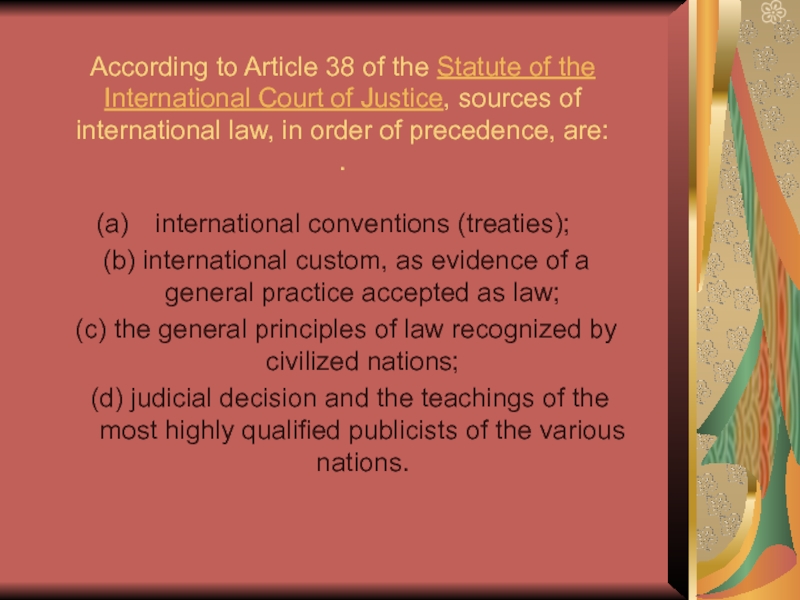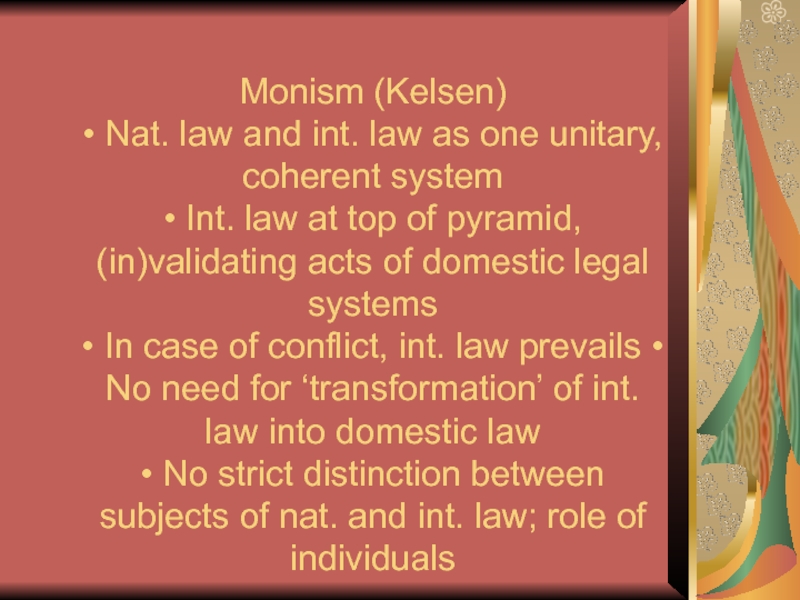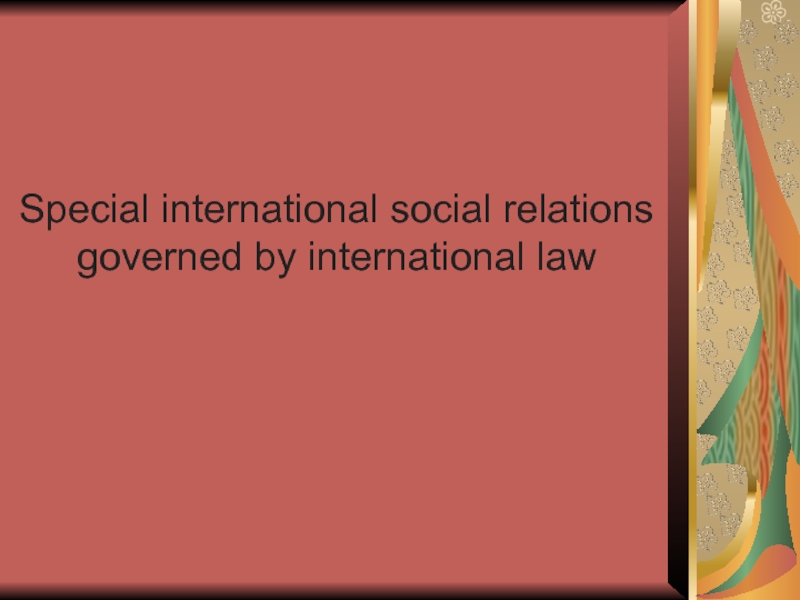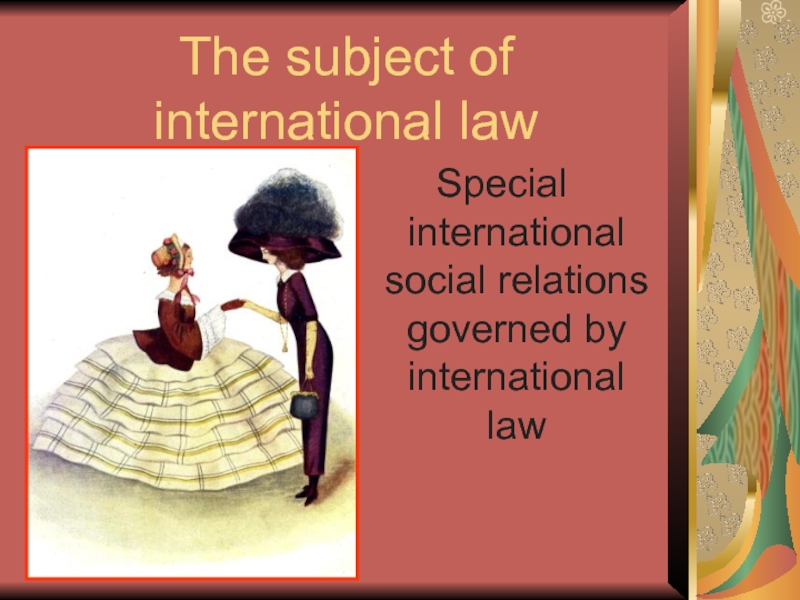- Главная
- Разное
- Дизайн
- Бизнес и предпринимательство
- Аналитика
- Образование
- Развлечения
- Красота и здоровье
- Финансы
- Государство
- Путешествия
- Спорт
- Недвижимость
- Армия
- Графика
- Культурология
- Еда и кулинария
- Лингвистика
- Английский язык
- Астрономия
- Алгебра
- Биология
- География
- Детские презентации
- Информатика
- История
- Литература
- Маркетинг
- Математика
- Медицина
- Менеджмент
- Музыка
- МХК
- Немецкий язык
- ОБЖ
- Обществознание
- Окружающий мир
- Педагогика
- Русский язык
- Технология
- Физика
- Философия
- Химия
- Шаблоны, картинки для презентаций
- Экология
- Экономика
- Юриспруденция
The Difference between International Law and National Law презентация
Содержание
- 1. The Difference between International Law and National Law
- 2. So, literally, “international law” is defined as
- 3. National law, which is often referred to
- 4. Structure 1. (Traditional) theories 2. International
- 5. Theories
- 6. Theories Monism (Kelsen) Nat. law and
- 7. Monism Dualism
- 8. According to Article 38 of the Statute of
- 9. Monism (Kelsen) • Nat. law and
- 10. Special international social relations governed by international law
- 11. The subject of international law Special
- 18. Sources of International Law
- 19. International agreements
- 20. International customs
- 22. Some resolutions of international organizations
- 23. General principles of law
- 24. Decisions of international courts
- 26. Unilateral statements by States
Слайд 2So, literally, “international law” is defined as “law between nations (States),”
The definition of international law centers on the word “inter,” which means “between,” as opposed to “intra,” which means “within.”
Слайд 3National law, which is often referred to as domestic law, are
Слайд 4Structure
1. (Traditional) theories
2. International law’s perspective on national law
3.
Слайд 5Theories
• Capture some, but not all of multifaceted relationship between domestic and international law today
Dualism
• international and domestic legal order exist as two separated, distinct sets of legal orders
• Differences in: subjects, sources, content
• Requires ‘transformation’ of int. law into domestic law to make int. law binding on domestic authorities (incorporation) • States decide on modes of incorporation (how)
• National law has priority over int. law that has not been incorporated
Слайд 6Theories
Monism (Kelsen)
Nat. law and int. law as one unitary, coherent
Int. law at top of pyramid, (in)validating acts of domestic legal systems
In case of conflict, int. law prevails • No need for ‘transformation’ of int. law into domestic law
No strict distinction between subjects of nat. and int. law; role of individuals
Слайд 8According to Article 38 of the Statute of the International Court of
international conventions (treaties);
(b) international custom, as evidence of a general practice accepted as law;
(c) the general principles of law recognized by civilized nations;
(d) judicial decision and the teachings of the most highly qualified publicists of the various nations.
